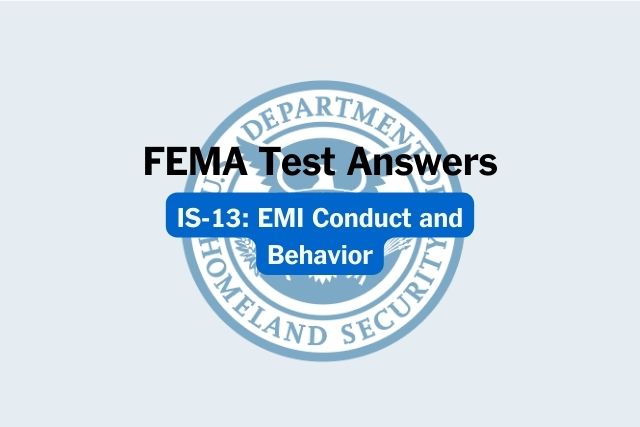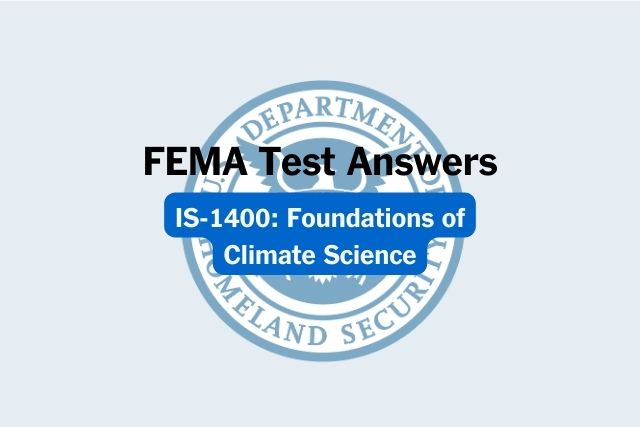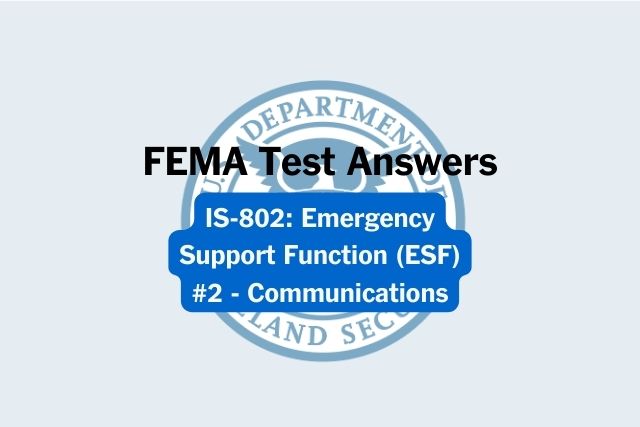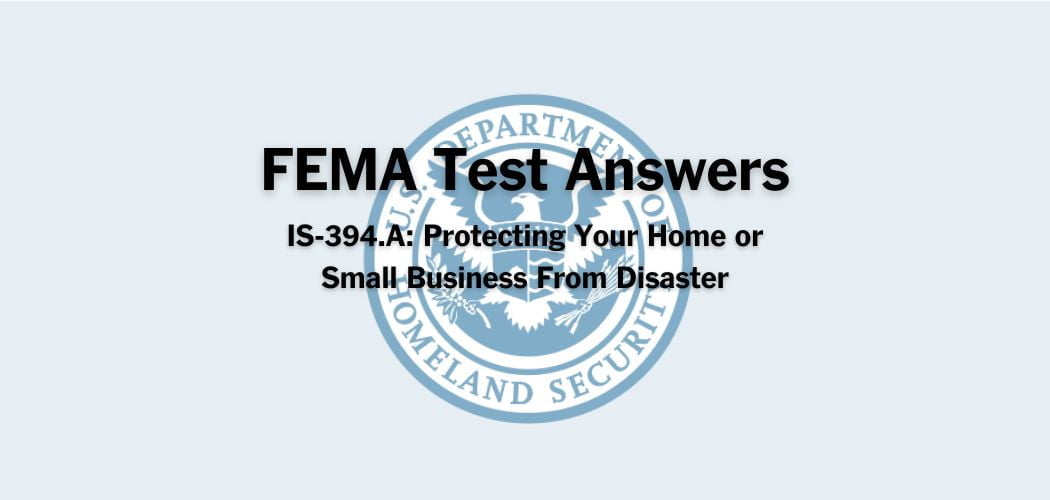Overview: The FEMA IS-318 course was published on Nov. 9, 2023 to provide an overview of the requirements for local hazard plans that are found in the Local Mitigation Planning Policy Guide (2022).
Primary audience: FEMA IS-318 is for diverse audiences including local government officials, first responders, and representatives from private or non-profit organizations.
FEMA IS-318.A test answers
NOTE: Each time this test is loaded, you will receive a unique set of questions and answers. The test questions are scrambled to protect the integrity of the exam.
Question 1. Element C4 states that the plan must identify and analyze a comprehensive range of specific mitigation actions and projects for each jurisdiction. Which of the following is true?
A. Each participating jurisdiction must have at least one action that applies to them.✅
B. The plan must include response and preparedness actions that apply.
C. Only certain jurisdictions need to have identified actions.
D. All actions must be different from the previous plan
Question 2. Which of the following statements correctly defines mitigation?
A. Mitigation is a short-term fix to recover from hazards.
B. Mitigation is the process of systematically eliminating the need for response efforts after disasters.
C. Mitigation is the process of altering the environment to prevent natural disasters from occurring.
D. Mitigation is any sustained action taken to reduce or eliminate the long-term risk to life and property from hazards.✅
Question 3. Element D – Plan maintenance is needed to keep the plan accurate. Which of the following is a required step in maintaining a plan?
A. Sending the plan to the state for its annual review.
B. Identifying new actions.
C. Sharing the plan assessment with the public
D. Evaluating the plan✅
Question 4. What is used for the plan review checklist?
A. Giving grant providers recommendations on whether or not to fund mitigation actions.
B. To identify required revisions for each sub-element that has not been met.✅
C. Scoring how well the plan met each requirement.
D. Assisting in the development of a plan maintenance process.
Question 5. Once a plan is approved, FEMA will send correspondence that identifies which of the following?
A. Recommendations on when to begin the next plan update.
B. The date approval expires.✅
C. Upcoming training and learning opportunities.
D. Communities ineligible to adopt the plan.
Question 6. Element B1 states that the plan must describe all natural hazards that can affect the jurisdiction. The plan must include information on all natural hazards including which of the following elements?
A. Maps for planned development
B. Hazard extent✅
C. Cost per hazard incident
D. Number of people in critical facilities
Question 7. Each local government can and should form a planning process that will work for its community. Which of the following is one of the four general steps in the planning process, no matter the level of the plan?
A. Developing response and recovery actions
B. Schedule plan maintenance meetings
C. Preparing for natural disasters
D. Assess risks✅
Question 8. Mitigation plan development and updates need to reflect the local situation and the most effective path. What is NOT a consideration in developing and updating a plan?
A.
B. Recent hazard events
C. Changes in land use, populations, and climate
D. The size of the planning area
Question 9. What is the primary purpose of the Plan Review Tool?
A. To provide the state with guidance on how to train local communities in plan development.
B. To provide a ranking of the plan in comparison to other communities.
C. Provide feedback to plan participants on required revisions and recommendations.✅
D. To identify recommended provisions for the plan update.
Question 10. Which of the following is true about the development of a local mitigation plan?
A. The community must implement all actions identified in the plan.
B. It serves as a guide for decision-makers who allocate resources.✅
C. It often conflicts with other community plans and priorities
D. The public cannot be included due to the sensitive nature of vulnerabilities
Question 11. Element A3 states that public participation must occur during the plan development process and that the plan must document how public feedback is incorporated. Which of the following is NOT true?
A. The public must be given a chance to be involved during the plan’s development.
B. The plan can include meeting materials such as sign-in sheets, minutes, and screenshots of social media.
C. The public should only be given the chance to contribute once the final plan is finished and ready for review.✅
D. The plan must include how underserved communities were involved.
Question 12. What is a state’s responsibility in supporting local governments?
A. Sitting in on all local planning meetings.
B. Providing a detailed critique of the plan’s format.
C. Passing the plan to FEMA if they assume it is complete.
D. Reviewing local mitigation plans before approval and providing feedback.✅
Question 13. Which is one of the status designations FEMA uses for a plan review outcome?
A. Requires Significant Revisions (RSR)
B. Meets all Requirements (MR)
C. Approvable Pending Adoption (APA)✅
D. Approved and Complete (AC)
Question 14. Which of the following is true about multi-jurisdictional summary sheets?
A. It is used to document all stakeholders who participated in single-jurisdiction plans.
B. A multi-jurisdictional summary sheet must be complete for multi-jurisdictional plans.✅
C. It documents the point of contact for every participating jurisdiction.
D. It is used only when all communities meet the requirements.
Question 15. How many days will FEMA review a local plan if possible?
A. 60
B. 35
C. 45✅
D. 20
Question 16. What is used for the plan review checklist?
A. Giving grant providers recommendations on whether or not to fund mitigation actions.
B. To identify required revisions for each sub-element that has not been met.✅
C. Assisting in the development of a plan maintenance process.
D. Scoring how well the plan met each requirement.
Question 17. There are four types of hazard mitigation actions or activities. Which of the following is one of these types?
A. Knowledge Building
B. Hazard Removal
C. Emergency Response
D. Natural systems protection✅



